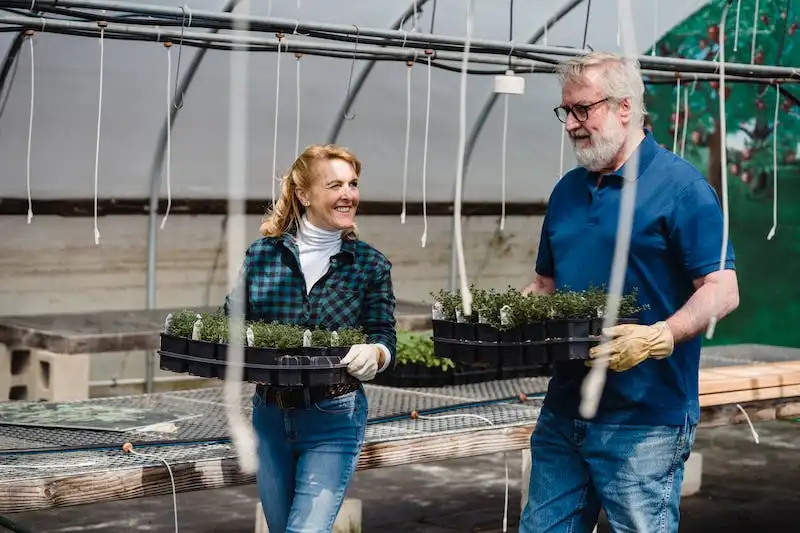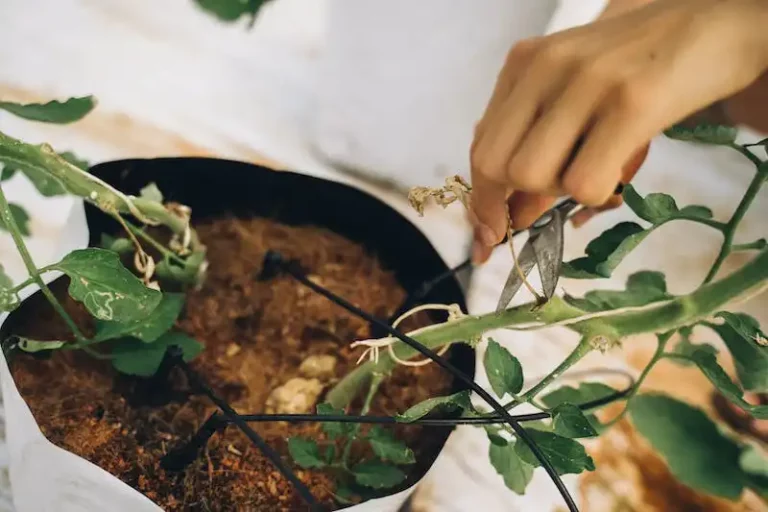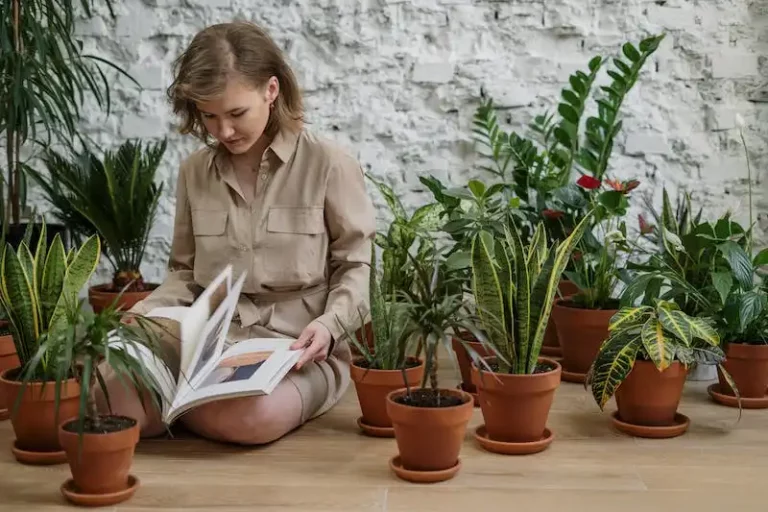Slugs are pesky crawlers that can wreak havoc on your garden and outdoor spaces. These slimy critters are attracted to plants and flowers, leaving behind a trail of destruction as they munch their way through leaves and stems. If you’ve ever woken up to find your prized garden plants decimated overnight, chances are you have a slug problem.
So, what can you do to get rid of these slimy snails? There are several methods that can help keep slugs at bay. One option is to remove their favorite hiding grounds. Slugs love to hide in dark and damp places, so making sure the area under your deck is dry and well-ventilated can help deter them. Check for any cracks or openings where slugs may be entering and seal them off.
If you’re dealing with a few slugs, you can also manually remove them. This can be done by wearing gloves and picking them off by hand. Another method is to create slug traps using beer. Slugs are attracted to the yeast in beer, so placing shallow dishes filled with beer in your garden can lure them in. The slugs will crawl into the beer and drown.
There are also natural remedies that can effectively get rid of slugs. For example, sprinkling salt or coffee grounds around your plants can repel slugs due to the sodium content. Nematodes, which are microscopic worms, can also help control slugs. These worms are a natural predator of slugs and can be purchased online or at garden centers. Simply follow the instructions on the package to release them into your garden.
If you prefer a chemical solution, there are slug baits available that contain metaldehyde. This chemical is highly effective in killing slugs but should be used with caution. Keep in mind that metaldehyde can be harmful to pets and wildlife, so be sure to follow the instructions carefully and keep it away from children and animals.
In addition to these methods, there are also some common-sense preventative measures you can take to keep slugs away. Slugs thrive in moist conditions, so try to water your plants in the morning, allowing the soil to dry out during the day. Slugs also love to feast on fruit, so be sure to pick up any fallen fruit from the ground. You can also create a barrier around your garden using materials like crushed eggshells, diatomaceous earth, or prickly mulch.
Remember, getting rid of slugs may require a combination of methods and some trial and error. Different methods may work better depending on the type of slug and the conditions in your garden. The key is to be persistent and proactive in your slug control efforts. Happy gardening!
How To Get Rid of Slugs
Slugs can become a major pest in gardens, causing damage to plants and flowers. If you’re dealing with slugs and want to get rid of them, here are 8 proven solutions you can try:
1. Use sand or diatomaceous earth: Spreading sand or diatomaceous earth around your plants can create an unattractive barrier for slugs. These elements can damage the slimy crawler’s body, making it an effective means of slug removal.
2. Try beer traps: Slugs are attracted to the scent of beer. To build a beer trap, put some beer in a container and bury it in the ground, with the rim at ground level. Slugs will be attracted to the beer and will crawl into the container, where they will drown.
3. Salt: Salt is another effective and easy way to get rid of slugs. Sprinkling salt on slugs can dehydrate and kill them. However, be cautious when using salt, as it can also damage the soil and harm other plants.
4. Cardboard traps: Slugs are attracted to dark and cool places. Placing pieces of damp cardboard on the ground near the infested area can act as a trap. Slugs will likely hide under the cardboard, making it easy for you to remove them.
5. Copper barriers: Slugs do not like to cross copper. By putting copper tape or wire around your plants or building raised beds with copper flashing, you can create a barrier that slugs will avoid.
6. Remove hiding places: Slugs like to hide in damp and shady areas. By removing debris, logs, and any other potential hiding spots around your garden, you can encourage them to find a new home elsewhere.
7. Check for fruity items: Slugs are attracted to fruits and other organic items. Remove any fallen fruits or decaying organic matter from the ground to eliminate a food source for slugs.
8. Surround your plants with coffee grounds: Slugs do not like the caffeine found in coffee grounds. By spreading coffee grounds around your plants, you can create an unattractive environment that slugs will avoid.
In summary, there are several proven ways to get rid of slugs. Whether you choose to use sand, beer traps, salt, cardboard traps, copper barriers, remove hiding places, check for fruity items, or surround your plants with coffee grounds, you can effectively control and eliminate slugs from your garden.
Slugs can do major damage to your favorite flowers and plants overnight. To keep those creepy crawlers from devastating your garden, try any of these 5 easy solutions.
Slugs are a common garden pest that can cause dangerous damage to gardens, especially to plants located under decks and in surrounding areas. These slimy creatures can quickly munch their way through your favorite flowers and plants, leaving behind a trail of destruction in their wake. Fortunately, there are several ways to combat this pesky problem and protect your precious plants.
One of the easiest and most effective ways to get rid of slugs is to manually remove them from your garden. Simply spot the slugs and pick them off, placing them in a bucket or container filled with soapy water. This method allows you to physically remove the slugs from your garden without using any harmful chemicals.
If you prefer a more hands-off approach, you can try using a slug spray that contains iron phosphate. This solution is safe for plants and pets but toxic to slugs. Simply spray the solution directly onto the slugs or onto the plants they are feasting on. The slugs will consume the iron phosphate and eventually die off, leaving your plants unharmed.
Another effective solution for keeping slugs away from your deck and surrounding areas is to create a barrier using crushed eggshells or diatomaceous earth. Sprinkle these substances around the base of your deck and plants to create an uncomfortable surface for slugs to crawl over. The sharp edges of the eggshells and diatomaceous earth will deter the slugs from attempting to cross the barrier.
If you’re looking for a natural and eco-friendly solution, consider using vinegar. Fill a spray bottle with white vinegar and spray it directly onto any slugs you find. The acidity of the vinegar will kill the slugs, effectively eliminating the problem. Additionally, you can mix equal parts vinegar and water and use this solution to spray your plants and surrounding areas as a preventative measure.
Lastly, you can set up slug traps to lure the slugs away from your plants and into a trap. There are various types of traps available, including beer traps and slug pellet traps. Beer traps involve placing a shallow container filled with beer near your garden. Slugs are attracted to the scent of the beer and will crawl into the container, where they will drown. Slug pellet traps work by setting up bait stations with slug pellets, which contain a poisonous substance that kills the slugs when ingested.
In summary, slugs can be a major nuisance in gardens and under decks. However, there are several easy solutions available to help you get rid of them. Whether you choose to manually remove the slugs, use a spray, create a barrier, or set up traps, it’s important to take action to protect your plants from the damage these creepy crawlers can cause.
1 Distract with Shiny Objects
One way to rid your garden of slugs is to distract them with shiny objects. Slugs are attracted to shiny surfaces, so placing some around your garden, including under your deck, can help keep them away from your plants. You can use aluminum foil, mirrors, or anything else that reflects light.
These shiny objects work by diverting the slugs’ attention away from your plants and towards the shiny surfaces. Slugs will be more interested in investigating the shiny objects rather than munching on your garden. This can help prevent them from spreading and causing damage.
To make these shiny objects even more enticing to slugs, you can spray them with a mixture of water and dish soap. The soapy water creates a slipperier surface that slugs will find less appealing. Additionally, you can try placing a small container of beer near the shiny objects. Slugs are attracted to the smell of beer and may gather around the container instead of your plants.
Another option is to use something similar to shiny objects, like sand or salt. Slugs do not like to crawl over rough or gritty surfaces, so incorporating these materials into your garden can create a less favorable environment for them. You can sprinkle sand or salt around your garden and under your deck to create a barrier that slugs will not want to cross.
If you prefer a more natural approach, you can try using ground-up eggshells or diatomaceous earth. These substances are sharp and abrasive, causing physical damage to the slugs as they crawl over them. This damage can deter slugs and make them less likely to return to your garden.
In summary, distracting slugs with shiny objects can be an effective way to keep them away from your garden and under your deck. Using reflective surfaces like aluminum foil and mirrors, spraying them with soapy water, or setting out containers of beer can all help divert the slugs’ attention. Additionally, incorporating sand, salt, ground-up eggshells, or diatomaceous earth into your garden can create a less hospitable environment for slugs. By implementing these methods, you can reduce the presence of slugs and minimize the damage they cause to your plants.




